Lessons for Teaching Grades Pre-K to 1
It is never too soon to introduce basic economics and personal finance concepts. In fact, kids often form their spending and saving habits as early as age 7. Here are some great lessons you can use to integrate personal finance and economics into your pre-K to first grade classes in reading, language arts and mathematics. Kids can practice important language arts and mathematics skills while learning about making choices, saving, goods, services and more.
Kiddynomics: An Economics Curriculum for Young Learners
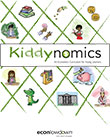
Kiddynomics: An Economics Curriculum for Young Learners is a set of lessons designed to introduce young children to the economic way of thinking. Informed decision-making is a critical thinking skill that students can use throughout their school, personal, and work lives. And, as citizens in a democratic society, they should understand basic principles of how the economy operates. Beginning economic education early and building on that learning throughout students’ education is the best way to ensure they develop vital decision-making skills.
Individual lessons (1-5) from the curriculum are listed below.
Betty Bunny Wants Everything, Kiddynomics Lesson 1
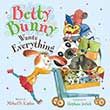
Students learn about wants, choice, and scarcity. They listen to the story Betty Bunny Wants Everything and identify all the wants that Betty Bunny has at the toy store. Students learn that because of scarcity, they must make choices. They practice making choices by selecting a treat they want, a toy for one of the book characters, and finally a school item. They sing a song about choices and scarcity. (Book by Michael B. Kaplan / ISBN: 978-0-8037-3408-1)
Subjects and concepts covered in this lesson (pdf) include decision-making, economics, personal finance, scarcity and wants.
An Orange in January, Kiddynomics Lesson 3

Students learn about the economic concepts of consumer and producer. They give examples of consumers and producers from the book An Orange in January. They become producers by helping make orange juice popsicles and consumers when they eat the popsicles. They are asked to correctly order three pictures based on the story. (Book by Dianna Hutts Aston / ISBN: 978-0-8037-3146-2)
Subjects and concepts covered in this lesson (pdf) include economics, personal finance and producers/consumers.
Just Saving My Money, Kiddynomics Lesson 4
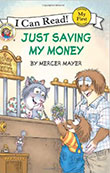
Students learn about banks and money. They recognize coins as money and manipulate them with classifying, sorting, and pattern-making activities. They draw a picture in a piggy bank of a good they would like to buy, cut out the bank, and hang it in the room. They hear the story Just Saving My Money and listen for the words "money" and "bank." Finally, each student draws a self-portrait of going to a bank. (Book by Mercer Mayer / ISBN: 978-0-06-083557-6)
Subjects and concepts covered in this lesson (pdf) include banks, economics, money, personal finance and saving.
You Can't Buy a Dinosaur with a Dime, Kiddynomics Lesson 5
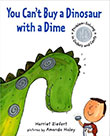
Students learn about saving and spending. They listen to the story You Can't Buy a Dinosaur with a Dime and identify examples of saving and spending in the story by holding up a plus or minus sign. Next, they follow along with another story about saving and spending by counting with pennies and copying actions mentioned in the story. They conclude by coloring pictures and identifying whether the pictures are examples of saving or spending. (Book by Harriet Ziefert / ISBN: 978-160905146-4)
Subjects and concepts covered in this lesson (pdf) include economics, personal finance, saving and spending.
Bunny Money Lesson
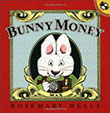
In this lesson, students listen to the story of Ruby and Max, two bunnies that go shopping and make many spending decisions. They are introduced to short-term and long-term savings goals to help them save for the goods they want in the future. After a goal-sorting activity, students choose and illustrate their own savings goal. (Book by Rosemary Wells / ISBN: 978-0-14-056750-2)
A supplemental math activity and a Q&A are also available to use with the book.
Counting with Common Cents Lesson
In this lesson, students practice counting as the book Counting with Common Cents is read. As they count pennies, nickels, and dimes, they place those coins on the appropriate spot on a handout, indicating how many pennies are equal to a nickel and a dime. They discuss saving their pennies and draw a picture of an item they would like to buy. In an optional activity, they draw pictures or write notes indicating chores they would do to earn 10 pennies. (Book by Deirdre McCarthy / ISBN: 978-1-5001-3936-0)
Curious George Saves His Pennies Lesson
In the story Curious George Saves His Pennies, George wants to buy a new bright-red train, but he does not have enough money. At the suggestion of his friend, George saves his money to buy the train.
In this lesson, the students draw an outline of a piggy bank, within which they write a word for or draw a picture of something they would like to buy. This becomes their savings goal. They listen to the story, and as George finds some ways to earn money, the students come up with ways they can earn money to reach their savings goals. Students are introduced to the difference between income and gift money. They participate in an activity where they determine if they are receiving income or gift money and how many weeks it will take them to reach their savings goal. Students also discuss why George did not buy the original red train he wanted. (Book by Monica Perez / ISBN: 978-0-547-81853-5)
Just Saving My Money Lesson

In this lesson, students learn about saving, savings goals, and income. They listen to the book Just Saving My Money by Mercer Mayer, a story about how Little Critter saves his money to buy a skateboard. Students use clues in the book's text and pictures to answer questions. After listening to the story, students play a game where they each have a savings goal, earn income, and save money until that savings goal is met. Students write math sentences to determine whether they have saved enough to reach their goals. Students also set their own savings goals and tell how they could earn income to meet them. (Book by Mercer Mayer / ISBN: 978-0-06-083557-6)
A Q&A is also available to use with the book.
Messy Bessey's Holidays Lesson
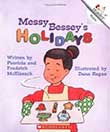
In the book, Messy Bessey's Holidays, Bessey wants to make holiday cookies to give as presents to her friends. In this lesson, students learn the factors of production, natural resources, human resources and capital resources (capital goods); as well as the intermediate goods used in making cookies. As assessment of knowledge, students classify factors of production and intermediate goods. (Book by Patricia and Fredrick McKissack / ISBN: 0-516-26476-1)
Money, Money, Honey Bunny! Lesson
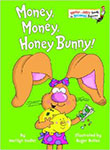
In this lesson, students listen to a story written in rhyme about a bunny who has a lot of money in her piggy bank. Students distinguish between spending and saving and goods and services. They play a matching game to review the content of the story and to practice rhyming words. (Book by Marilyn Sadler / ISBN: 0-375-93370-0)
A Q&A is also available to use with the book.
Monster Musical Chairs Lesson

In this lesson, students listen to the story and identify the scarcity problem the monsters had—not enough chairs for every monster to have one. Students wear a picture of a want they have drawn and play a version of musical chairs in which the chairs are labeled goods. Students learn that a good can satisfy a want. They also learn that, because of scarcity, not everyone's wants are satisfied. (Book by Stuart J. Murphy / ISBN: 0-06-028020-4)
Sheep in a Shop Lesson
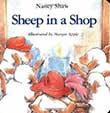
In this lesson, students listen to a story about sheep that go shopping for a gift. Unfortunately, they don't have quite enough money and must barter wool to obtain the gift they want. The students discuss what barter is and suggest other solutions to the sheep's problems. Students earn cotton balls and pennies for work that they do. They use the cotton balls to decorate a sheep and use extra cotton balls and pennies to buy additional decorations for their sheep. (Book by Nancy Shaw / ISBN: 978-0-395-70672-5)
A Q&A is also available to use with the book.
The Berenstain Bears' Mad, Mad, Mad Toy Craze Lesson
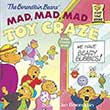
In this lesson, students are asked to imagine they have to buy a birthday cake for their best friend to see if they know where to buy one and how much it is likely to cost. Then they hear a story about two little bears who go a little crazy collecting the newest toy fad, Beary Bubbies. They follow along with the story by matching Beary Bubby sellers to the prices they ask. Students then draw their own Beary Bubby and determine a price for it. They also play a matching game to match common goods with their corresponding prices and sellers. (Book by Stan and Jan Berenstain / ISBN: 978-0-679-88958-8)
A Q&A is also available to use with the book.
Personal Finance, Language Arts, and Mathematics: Kindergarten Curriculum Unit
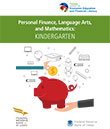
The lessons in this unit employ active-learning strategies that engage young children. Each lesson is based on a story about two cousins—one who lives on a farm and one who lives in a city. Students listen to the stories and recall information from the stories to develop an understating of concepts while applying language arts and mathematics skills. The lessons include essential questions, formative and summative assessments (with answers), and instructional support (procedure steps, handouts, and visuals).
---
If you have difficulty accessing this content due to a disability, please contact us at economiceducation@stls.frb.org or call the St. Louis Fed at 314-444-8444 and ask for Economic Education.

